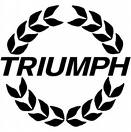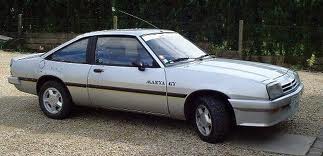


This edition of the Triumph Spitfire Mk 3 is the 4 speed / Manual version and was first brought out in 1967. This was at around the same time as the introduction of the 1968 Dodge Dart Hemi 7.0 V8 and the 1968 Plymouth Road Runner 426 Hemi V8 1st Gen.This particular Triumph Spitfire has a 1296cc Naturally Aspirated Petrol powerplant with 4 cylinders in a St formation.
The Spitfire shares its Petrol St4 engine configuration with the likes of the 2019 Ariel Atom 4 2.0 Turbo and the 2013 Caterham 7 620 R 2.0 L Supercharged. If you're looking for other fast cars which share the Spitfire's Rear Wheel Drive, Cabriolet combination then how about the 1982 Fiat X1/9 1.5 8V or the 1965 Aston-Martin DB6 1965.
Weighing in at 711 kgs (1567 lbs) this makes the Triumph Spitfire Mk 3 in the same weight category as the 2003 Lotus Elise 1.8 S2 Sport 190 or the give or take 50kg.
In terms of power the 1296cc 8V St4 engine produces 75 bhp (55 kW) @ 6000 rpm similar to the 2013 Caterham 7 160/165 0.7L Turbo (79 bhp) or the 2012 Lexus CT 200h 1.8L (98 bhp).
The Naturally Aspirated St4 throws out 75 lb-ft (101.6 Nm) @ 4000 rpm placing it with cars of similar torque performance figures such as the 2013 Caterham 7 160/165 0.7L Turbo (79 lb-ft) or the 2011 Aston-Martin Cygnet 1.3L Launch Edition (92 lb-ft).
If one combines the weight with power or torque performance for the Triumph Spitfire you can get a better idea of it's real world performance.
![Volkswagen-VW Beetle 2.0 TSi Cabriolet - [2012] image Volkswagen-VW Beetle 2.0 TSi Cabriolet - [2012] image](/editionimages/1121.jpg)
The 2012 Volkswagen-VW Beetle 2.0 TSi Cabriolet (130.4 bhp per ton) has similar Bhp Per Ton stats as the Triumph Spitfire.
The Triumph Spitfire has a Power to weight ratio of 105.4 bhp per ton and 105.4 lb-ft per ton. Bhp Per Ton figures of the 1967 Spitfire competing with the 2012 Volkswagen-VW Beetle 2.0 TSi Cabriolet (130.4 bhp per ton) or the 1996 Audi A4 2.8 Quattro (130.3 bhp per ton).
If you agree with the late great Carroll Shelby then arguably an even better indicator of potential performance, Torque. Use weight as well and you end up with - Torque per ton, with the Triumph Spitfire generating around 105.4 lb-ft per ton. If you're curious as to what other cars have as much torque to weight then look no further than the 1997 Mitsubishi Pajero-Shogun Evolution 3.5 V6 (130.4 lb-ft per ton) or the 1996 Audi A4 2.8 Quattro (130.3 lb-ft per ton).
With a 0-60mph time of 13.60 secs or a 0-100km/h (0-62mph) of 14.1 secs, this made the Triumph Spitfire Mk 3 as fast as the 1954 Jaguar Mark VII 3.4L 12v (13.60 secs) the 2005 Citroen C1 1.0 VTR 3dr (13.70 secs) the 1950 Jaguar Mark VII 3.4L (13.70 secs) the or the 1952 Bentley R-Type 4.6 4d Saloon (13.80 secs). This Triumph Spitfire Mk 3 is also faster than the 2005 Citroen C1 1.0 VTR 3dr (13.70 secs) the 1950 Jaguar Mark VII 3.4L (13.70 secs) the 1952 Bentley R-Type 4.6 4d Saloon (13.80 secs) the and the 1967 Volvo P 1800S (13.90 secs).
When talking about the performance of the Triumph Spitfire on the drag strip it can reach a quarter mile in an estimated 17.6 secs @ 77.7 mph. Similar performance down the quarter mile can be found with the the 1968 Ferrari 206 Dino GT (17.52 secs), the 2016 Abarth 124 Spider 1.4 Turbo (17.53 secs), and the 1995 Fiat Coupe 2.0 16V Turbo (17.54 secs).
Modern performance cars are often artificially restricted to 155mph. The 1967 version of the Triumph Spitfire Mk 3 has a maximum speed of 100mph.
If maxing out your car on the AutoBahn is your thing and you're wondering what's faster than the 1967 Triumph Spitfire Mk 3 then how about the 1979 Dodge Magnum GT 5.9L V8 (111 mph), the 1976 Ford Granada 3.0 V6 (111 mph), or the 1975 Ford Escort Mk2 RS1800 (111 mph).










Bentley Brooklands 4d
Engine: Naturally Aspirated Petrol | 6750cc 16v V8
Top Speed: 128 mph
0-60mph: 9.60 seconds

Subaru Impreza WRX STI S206
Engine: Turbo Petrol | 1994cc 16v F4
Top Speed: 249.4 kph
0-100kph: 4.6 seconds



















